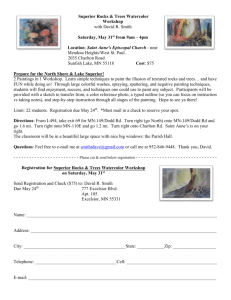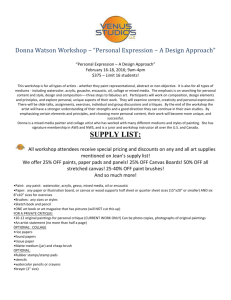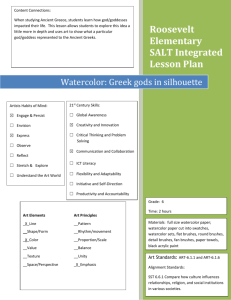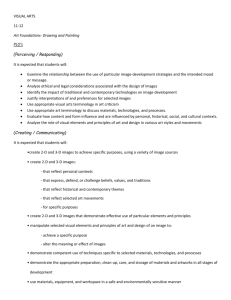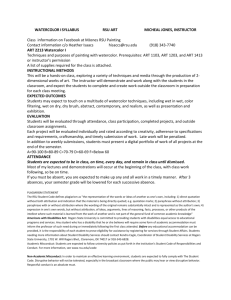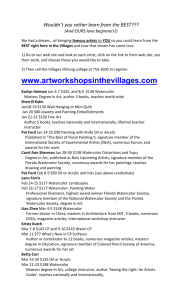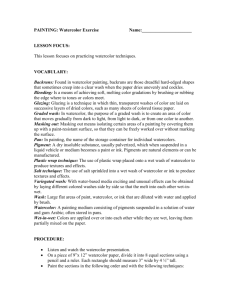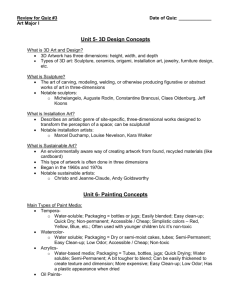Watercolor Paint
advertisement
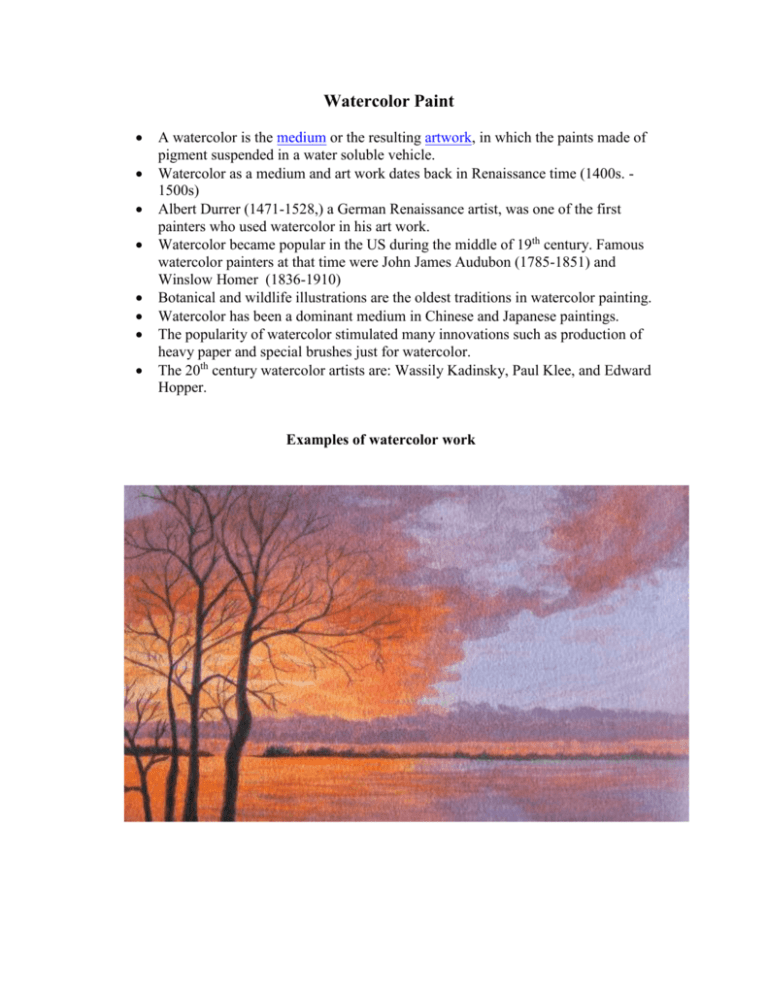
Watercolor Paint A watercolor is the medium or the resulting artwork, in which the paints made of pigment suspended in a water soluble vehicle. Watercolor as a medium and art work dates back in Renaissance time (1400s. 1500s) Albert Durrer (1471-1528,) a German Renaissance artist, was one of the first painters who used watercolor in his art work. Watercolor became popular in the US during the middle of 19th century. Famous watercolor painters at that time were John James Audubon (1785-1851) and Winslow Homer (1836-1910) Botanical and wildlife illustrations are the oldest traditions in watercolor painting. Watercolor has been a dominant medium in Chinese and Japanese paintings. The popularity of watercolor stimulated many innovations such as production of heavy paper and special brushes just for watercolor. The 20th century watercolor artists are: Wassily Kadinsky, Paul Klee, and Edward Hopper. Examples of watercolor work Watercolor techniques Flat wash is a process of applying paint to the paper with flat, even color. Graded wash is similar to flat wash except that the color is not even, but gradually fades to white paper across the area to be covered. Wet – on- wet is a process of applying paint to the wet paper with a brush that is fully loaded with water. This technique produces very soft, feather like shapes. Wet – on – dry is a process of applying paint to the dry paper with the brush that is fully loaded with water. Dry brush is a process of applying paint to the dry paper with a brush that is partially loaded with water. Winslow Homer (1836-1910) Homer was an American watercolor artist known for his landscape and seascape paintings. He worked as an illustrator before becoming a watercolor painter. He was largely self-taught as a painter. His style is similar to the style of the impressionist artists (loose brush strokes, the presence of natural light) although he was not influenced by them. He implemented a specific method in his watercolor paintings which involved the use of sandpaper to scrape off dried paint after the painting was already done. Silhouettes examples A silhouette is a view of an object or scene consisting of the outline and a featureless interior, with the silhouetted object usually being black. The term was initially applied in the 18th century to portraits or other pictorial representations cut from thin black card. Landscape Cityscape People Animals Watercolor Project and Rubric Task: Create a picture using watercolor as a medium. Your picture needs to have the background and the images. Background requirements: 1. depict either sky and water or sky and land. 2. Apply watercolor wash (flat or graded) using a wet on wet watercolor technique. Image requirements: Your image can be a person or people, animal(s), city, and any kind of landscape or seascape. Make sure that your image is silhouetted. Use dry brush watercolor technique for painting the images. Refer to the handout for some examples. Rubric for Watercolor Project Guidelines: 10 points: 1. Your picture has clearly distinguished background and the images. Skills and Techniques: 10 points 1. The background is created using watercolor wash technique. 2. There is a clear separation between sky and land or sky and water. 3. The images are created using dry brush technique. Neatness: 10 points 1. Paper is not ripped off. 2. There are no smudges or runs. 3. The picture is clean.
